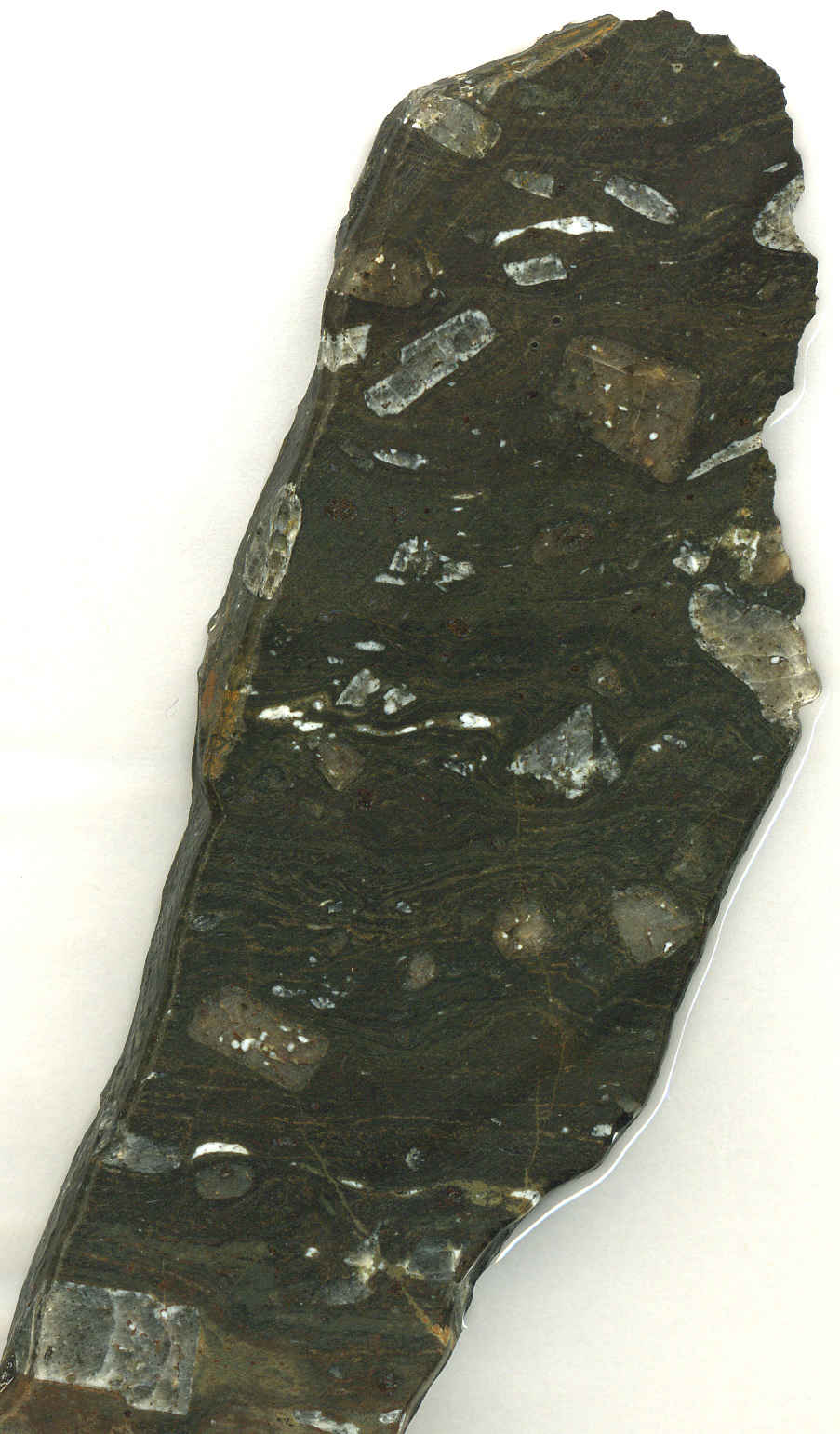Kenyte on:
[Wikipedia]
[Google]
[Amazon]
 Kenyte is a type of
Kenyte is a type of
 Kenyte is a type of
Kenyte is a type of igneous rock
Igneous rock ( ), or magmatic rock, is one of the three main rock types, the others being sedimentary and metamorphic. Igneous rocks are formed through the cooling and solidification of magma or lava.
The magma can be derived from partial ...
. More specifically, it is a variety of porphyritic
Porphyritic is an adjective used in geology to describe igneous rocks with a distinct difference in the size of mineral crystals, with the larger crystals known as phenocrysts. Both extrusive and intrusive rocks can be porphyritic, meaning ...
phonolite
Phonolite is an uncommon shallow intrusive or extrusive rock, of intermediate chemical composition between felsic and mafic, with texture ranging from aphanitic (fine-grained) to porphyritic (mixed fine- and coarse-grained). Phonolite is a var ...
or trachyte
Trachyte () is an extrusive igneous rock composed mostly of alkali feldspar. It is usually light-colored and aphanite, aphanitic (fine-grained), with minor amounts of mafic minerals, and is formed by the rapid cooling of lava (or shallow intrus ...
with rhomb-shaped phenocryst
image:montblanc granite phenocrysts.JPG, 300px, Granites often have large feldspar, feldspathic phenocrysts. This granite, from the Switzerland, Swiss side of the Mont Blanc massif, has large white phenocrysts of plagioclase (that have trapezoid sh ...
s of anorthoclase
The mineral anorthoclase ((Na,K)AlSi3O8) is a crystalline solid solution in the alkali feldspar series, in which the proportion of the sodium-aluminium silicate member exceeds the potassium-aluminium silicate member. It typically consists of bet ...
with variable amounts of olivine
The mineral olivine () is a magnesium iron Silicate minerals, silicate with the chemical formula . It is a type of Nesosilicates, nesosilicate or orthosilicate. The primary component of the Earth's upper mantle (Earth), upper mantle, it is a com ...
and augite
Augite, also known as Augurite, is a common rock-forming pyroxene mineral with formula . The crystals are monoclinic and prismatic. Augite has two prominent cleavages, meeting at angles near 90 degrees.
Characteristics
Augite is a solid soluti ...
in a glassy matrix
Matrix (: matrices or matrixes) or MATRIX may refer to:
Science and mathematics
* Matrix (mathematics), a rectangular array of numbers, symbols or expressions
* Matrix (logic), part of a formula in prenex normal form
* Matrix (biology), the m ...
; the glass may be devitrified.
It was originally described and named by J. W. Gregory
John Walter Gregory, , (27 January 1864 – 2 June 1932) was a British geologist and explorer, known principally for his work on glacial geology and on the geography and geology of Australia and East Africa.
The Gregory Rift in the Great Rift ...
in 1900 for the occurrence on Mount Kenya
Mount Kenya (Meru people, Meru: ''Kĩrĩmaara,'' Kikuyu people, Kikuyu: ''Kĩrĩnyaga'', Kamba language, Kamba: ''Ki nyaa'', Embu language, Embu: ''Kĩ nyaga'') is an extinct volcano in Kenya and the Highest mountain peaks of Africa, second-highe ...
. Kenyte has also been reported from Mount Kilimanjaro
Mount Kilimanjaro () is a dormant volcano in Tanzania. It is the highest mountain in Africa and the highest free-standing mountain above sea level in the world, at above sea level and above its plateau base. It is also the highest volcano i ...
(Tanzania) and Mount Erebus
Mount Erebus () is the southernmost active volcano on Earth, located on Ross Island in the Ross Dependency in Antarctica. With a summit elevation of , it is the second most prominent mountain in Antarctica (after Mount Vinson) and the second ...
(Antarctica).Kyle, Philip R., ed., ''Volcanological and Environmental Studies of Mount Erebus, Antarctica,'' American Geophysical Union (December 1994), p. ''xi''
References
Volcanic rocks Mount Kenya Geology of Kenya Volcanism of Antarctica {{igneous-rock-stub